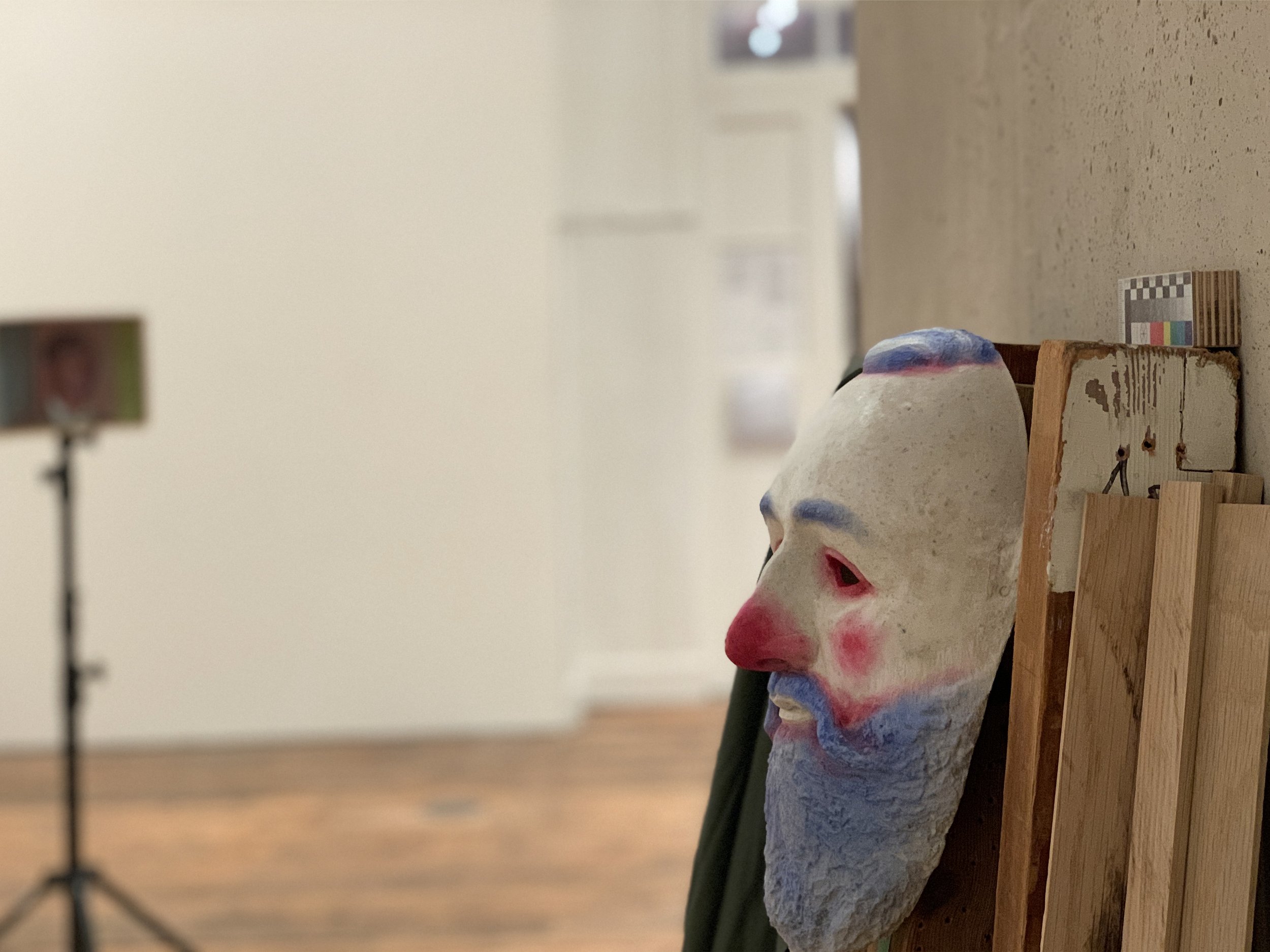
Hand of Glory
11 July - 17 August 2025
Royal Academy of Arts | Weston Studio | Burlington House | Exhibition Guide | Photography by Andy Keate
For Hand of Glory Lyndon Barrois Jr. continues to borrow forms from existing scenography, art history, and prop logics of film production to produce what he calls static filmmaking, evoking a sense of the cinematic without moving image. Barrois Jr. alludes to a story of a museum heist as a means of wealth redistribution, thereby absorbing objects and works from museum collections, and fabricating original works in the guise of a copyist. He uses the tools and aesthetics of museum conservation to muddle value, distorting perceptions of what has been forged, restored or newly produced.
Hand of Glory borrows its name from a folkloric figure of the mummified, waxed candle made from the hand of a thief, that when lit and placed on a mantle piece, would enable a burglar to pass through a residence undetected. Theft, historically pacified by being called an act of translation, has become convenient terminology for Barrois Jr., who often engages in translations of images and objects from one material to another. Considering histories of pillaging, and ongoing colonial extraction, the show draws a thread through time citing visual references in cinema, art history, and imperial ambition, that bring mythical acts of theft into present relief.
At the heart of the show is a focus on criminality, and the apparent contradictions of what society deem as justifiable ills, or what history have considered 'divine rights of acquisition.' Narratively, we have accepted the false distinctions between gentleman thieves and petty criminals, simultaneously charmed by the admirable skills of the former, and shaming the intolerable cruelty of the latter. It leads to the fraught question of whether or not a crime, or a resistance to order, could be carried out for the right reasons.































